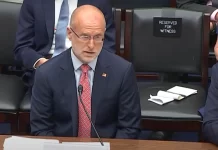Inflation slows, as payrolls soar, and the economy remains flat, indicating a recession is farther off; meanwhile, a federal spending spree.
The Week That Was
Today’s July employment report defied expectations of any slowdown in the economy. Private payrolls soared by 471,000 and hours worked rose by 0.3%. Both increased at 4% annual rates. These data are consistent with the July ISM surveys which show no significant signs of the economy slowing down.
Business surveys for July show an extreme divergence of views on the economy. The S&P Global surveys show the economy declining, while the ISM surveys show manufacturing moving slightly positive, with a reading of 52 and service companies strong with a reading of 60 for both the composite and new orders.
Things to Come
This coming week the Senate will vote on the Schumer-Manchin deal. This is Build Back Better two, which is a $738 billion boondoggle over the next 10 years. It includes over $300 billion in tax increases and significant spending reallocating resources from the private, productive sector to areas favored by politicians and bureaucrats. The bill will keep campaign contributions flowing to the bill’s supporters, while further lowering most workers’ living standards.
On Tuesday, the government releases its estimate of second quarter productivity. With the economy flat and the number of workers increasing, productivity is likely to be down 2.3% from a year ago. This is for the year following the passage of the original Build Back Better Bill. The weakness in productivity and the economy provides a clear indication of what we can expect from passing the next installment of Build Back Better.
July inflation numbers for consumer prices (Wednesday) and producer prices (Thursday) are expected to show significant relief from inflation. Oil prices declined 12% in July to $100 and have since declined by another 12% into August. The decline in oil prices is another sign of weakness in the economy.
Signs inflation is moving sharply lower should reinforce the perception in financial markets that the Fed is on the right track and the economy is moving lower.
Market Forces
Stock prices moved higher again this week led by gains of 4% to 5% in the Nasdaq and 1% to 2% for other indexes.
Technical indicators improve slightly. The next resistance for technical indicators will be their 200- day moving averages, which are 6% to 8% above current levels. After the recent sharp gains, stocks have a tendency to level off to consolidate such gains. Stocks could move lower if the destructive Schumer-Manchin deal is approved by the Senate.
Economic indicators are mixed. Many, including our own proprietary indicators, show the economy has stopped growing and is moving lower. However, other indicators point to continued strong growth.
Interest rates are among the key indicators pointing to restraint. So long as the yield on 10-year Treasury Notes remains in the vicinity of 3% or less, it provides an indication monetary policy remains restrictive.
Financial markets estimate inflationary expectations have increased to 2.5%. At this low level, financial markets remain convinced the Fed will make progress in containing inflation.
Updating our model with second quarter numbers produces a fundamental value for the S&P500 of close to 3200. This places the S&P500 24% above its fundamental value.
Outlook
Economic Fundamentals: weak
Stock Valuation: S&P 500 overvalued by 24 percent
Monetary Policy: restrictive
For more Budget & Tax News.










